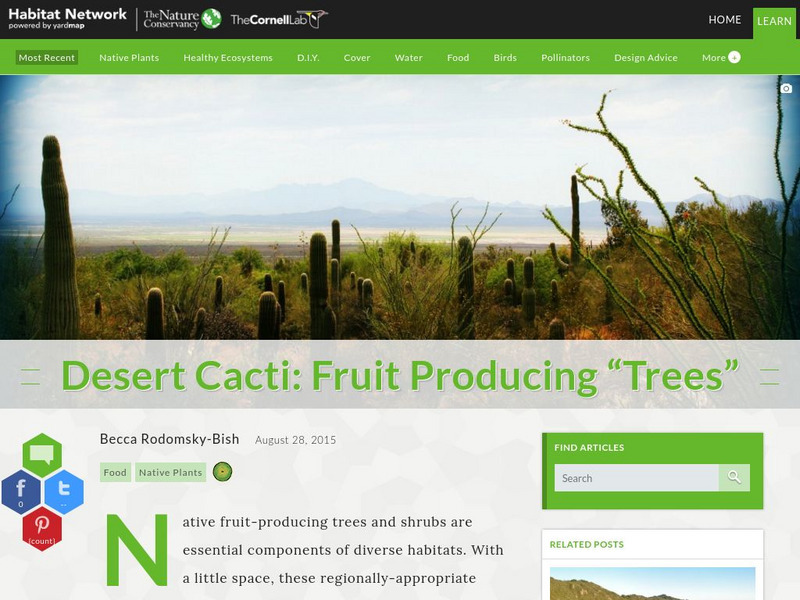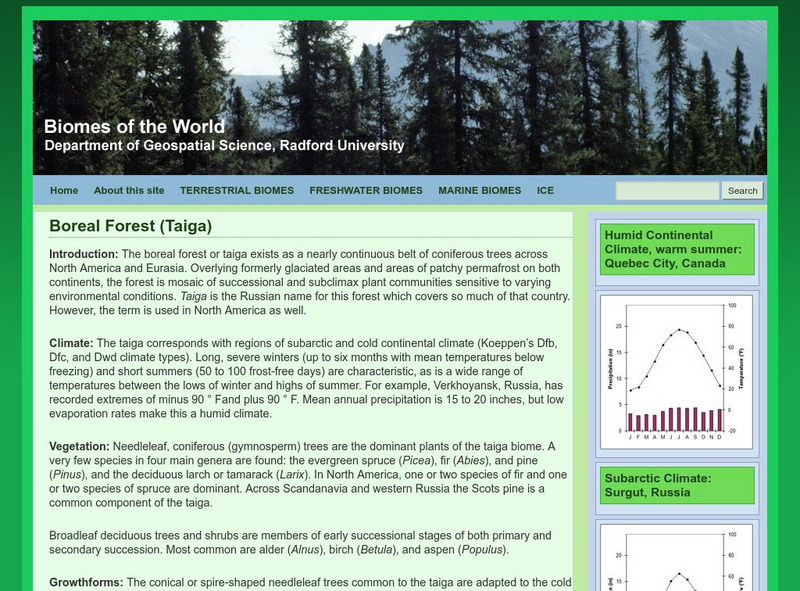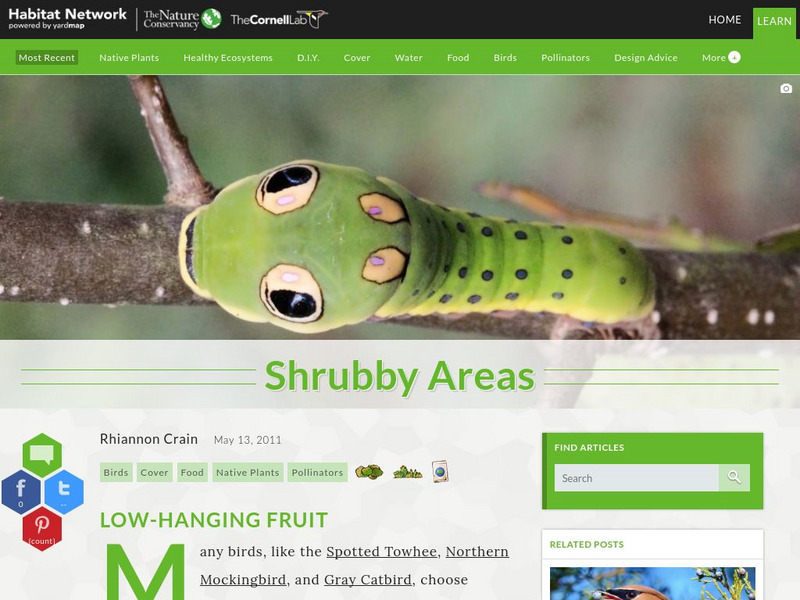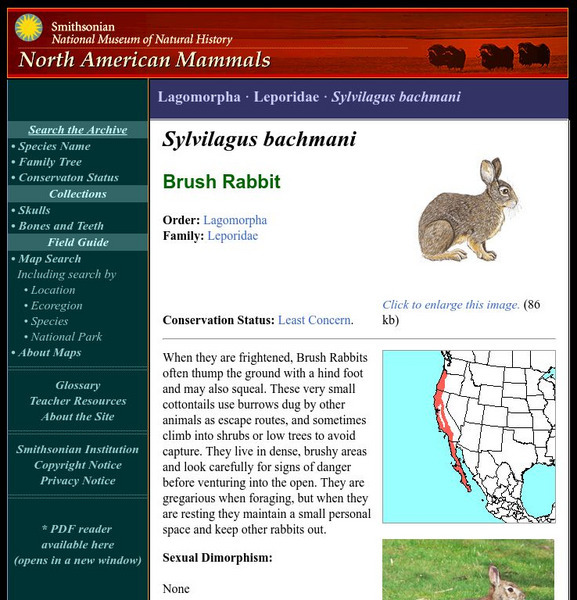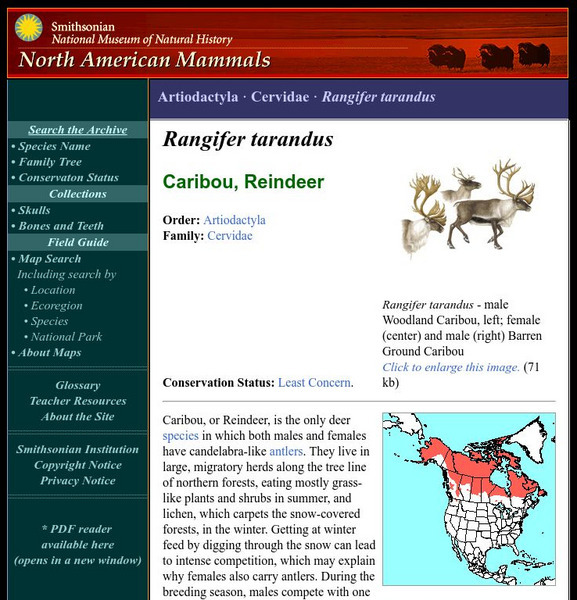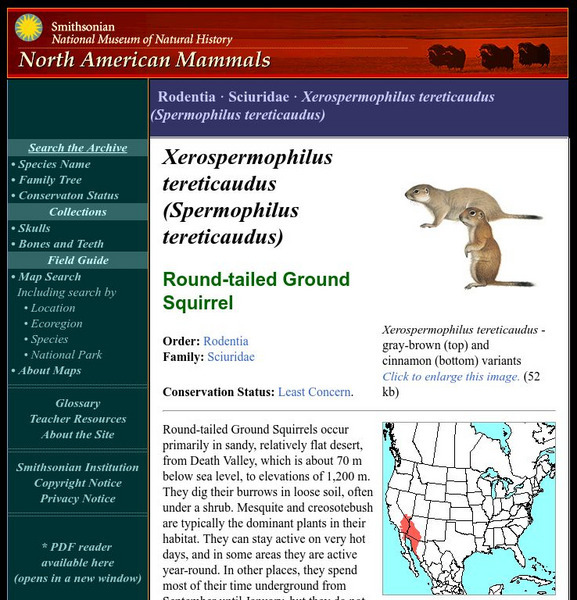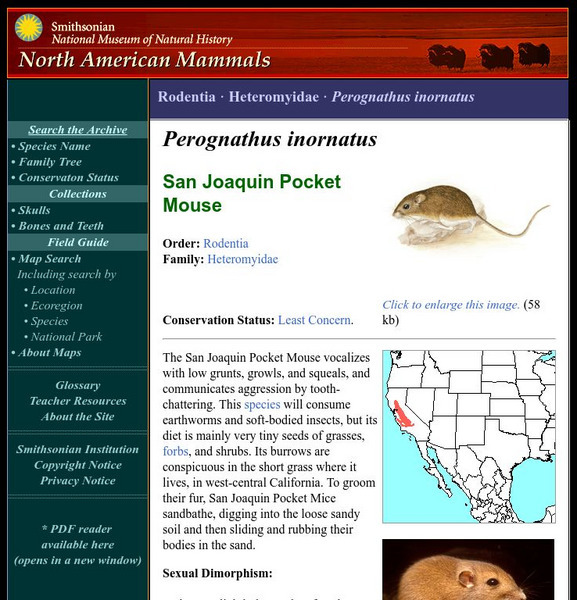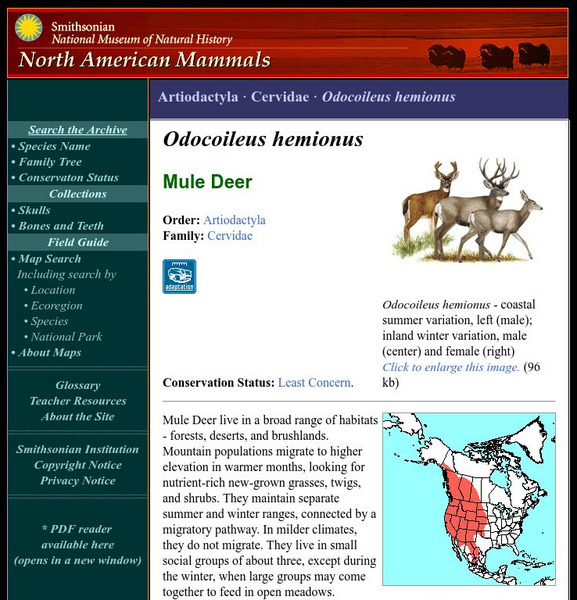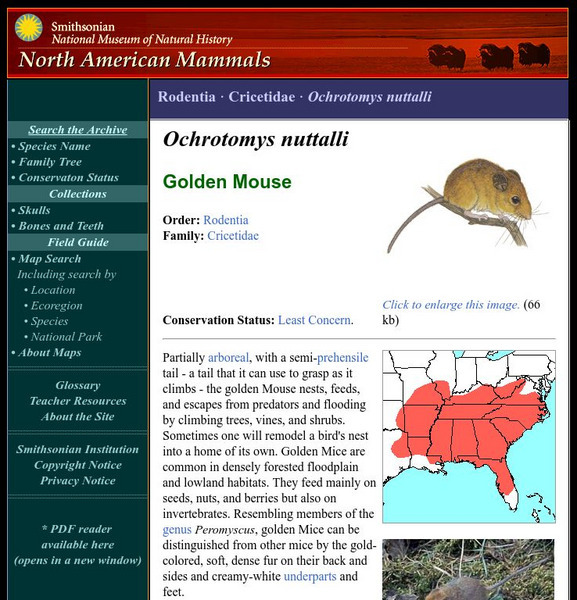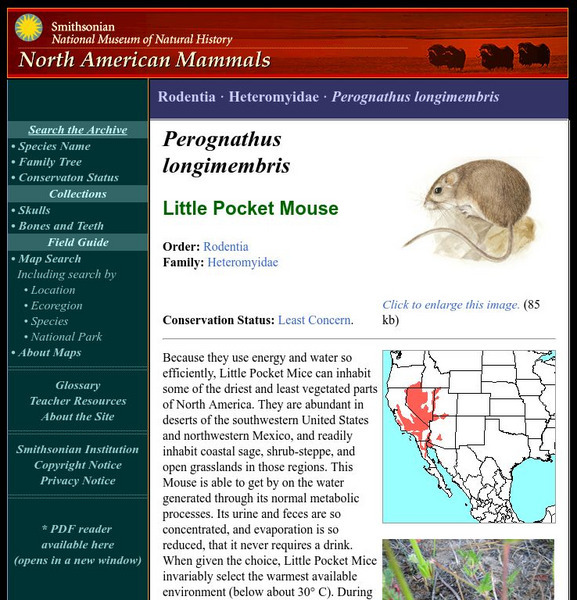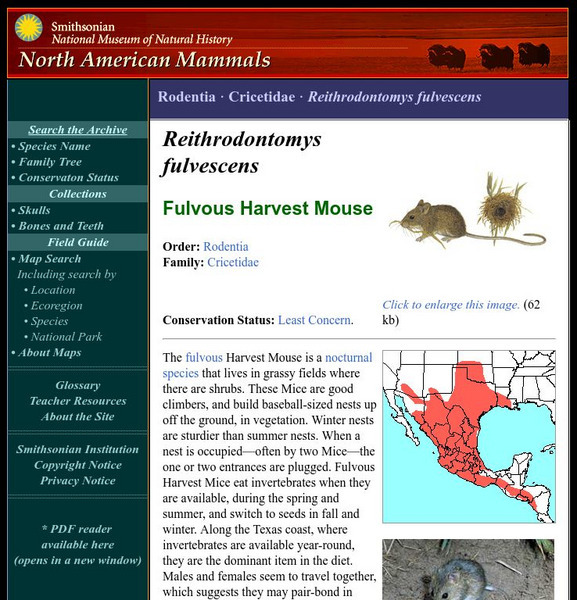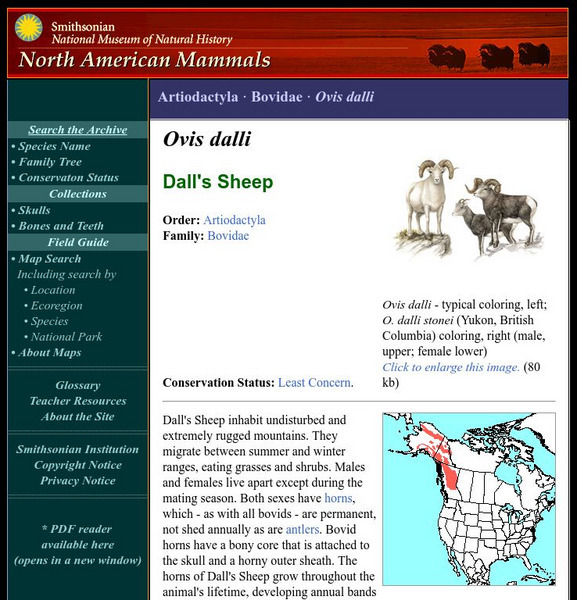Cornell Lab of Ornithology
Habitat Network: Desert Cacti: Fruit Producing "Trees"
Find out why native fruit-producing trees and shrubs are essential components of diverse habitats.
Environmental Education for Kids
Eek!: Forest Plants
Forest plants include trees, shrubs, vines, mosses, ferns, woodland wildflowers, and other green and growing things that can thrive in shade. Read about some of Wisconsin's forest plants.
NSTATE
Texas State Symbols
Here is a complete list of the Texas state symbols, including their year of adoption. Click on one to be taken to a page with more information and a picture.
University of California
University of California, Berkeley: Cal Photos: Plants
Need a photo for a project, report, multimedia presentation on plants from around the world as well as California? Find fair use images of specific plants by searching with the scientific name, common name, or location.
Other
Radford University: Taiga or Boreal Forest
This site provides a thorough fact sheet of a taiga forest (or boreal forest as it is otherwise known). Content includes a look at the forest climate, vegetation, growth forms, and soil. Additional information can be found on the alpine...
Cornell Lab of Ornithology
Habitat Network: Shrubby Areas
Find out how to foster diversity in wildlife by providing the right type of vegetation for shrubby areas.
Curated OER
Wild Raisin Shrub Professor Beaker
Listed on this page are some northern Ontario wildflowers that occur in the northern deciduous forest in Canada. Provided are descriptions and information about the plants, and numerous pictures.
Smithsonian Institution
National Museum of Natural History: American Mammals: Brush Rabbit
When they are frightened, Brush Rabbits often thump the ground with a hind foot and may also squeal. These very small cottontails use burrows dug by other animals as escape routes, and sometimes climb into shrubs or low trees to avoid...
Smithsonian Institution
National Museum of Natural History: American Mammals: Caribou
Caribou, or Reindeer, is the only deer species in which both males and females have candelabra-like antlers. They live in large, migratory herds along the tree line of northern forests, eating mostly grass-like plants and shrubs in...
Smithsonian Institution
National Museum of Natural History: American Mammals: Round Tailed Ground Squirrel
Round-tailed Ground Squirrels occur primarily in sandy, relatively flat desert, from Death Valley, which is about 70 m below sea level, to elevations of 1,200 m. They dig their burrows in loose soil, often under a shrub. Learn more about...
Smithsonian Institution
National Museum of Natural History: American Mammals: Eastern Red Bat
Common and widespread from far southern Canada throughout most of the United States and Mexico, and farther south through Central America and into South America, the Eastern Red Bat requires trees and shrubs for roosting. It is...
Smithsonian Institution
National Museum of Natural History: American Mammals: White Sided Jackrabbit
The White-sided Jackrabbit strongly prefers level ground to hills, and does not require shrubs for cover, but uses clumps or dense stands of grass instead. Grass also makes up more than 99 percent of its diet. Learn more about the Lepus...
Smithsonian Institution
National Museum of Natural History: American Mammals: Northern Pygmy Mouse
Northern Pygmy Mice are the smallest rodents in North America. They live in a variety of habitats where there is dense ground cover and eat grass seeds and leaves, prickly pear cactus fruit and stems, mesquite beans, and granjeno berries...
Smithsonian Institution
National Museum of Natural History: American Mammals: San Joaquin Pocket Mouse
The San Joaquin Pocket Mouse vocalizes with low grunts, growls, and squeals, and communicates aggression by tooth-chattering. This species will consume earthworms and soft-bodied insects, but its diet is mainly very tiny seeds of...
Smithsonian Institution
National Museum of Natural History: American Mammals: Nelson's Antelope Squirrel
Open, rolling land and gentle slopes with shrubs are the habitat of Nelson's Antelope Squirrel, which lives only in a small region of California in and near the San Joaquin Valley. The squirrels live in relatively small colonies of six...
Smithsonian Institution
National Museum of Natural History: American Mammals: Mule Deer
Mule Deer live in a broad range of habitats - forests, deserts, and brushlands. Mountain populations migrate to higher elevation in warmer months, looking for nutrient-rich new-grown grasses, twigs, and shrubs. Learn more about the...
Smithsonian Institution
National Museum of Natural History: American Mammals: Yellow Faced Pocket Gopher
The Yellow-faced Pocket Gopher feeds on starchy, tuberous roots of desert shrubs and on the roots and leaves of low-growing forbs. Like other pocket gophers, this species is considered an agricultural pest, doing extensive damage in...
Smithsonian Institution
National Museum of Natural History: American Mammals: Nelson's Pocket Mouse
Nelson's Pocket Mice live in the Chihuahuan Desert of north-central Mexico and adjacent parts of western Texas and southern New Mexico. They are found mostly in rocky areas where there are some shrubs to provide cover. Learn more about...
Smithsonian Institution
National Museum of Natural History: American Mammals: Uinta Chipmunk
Uinta chipmunks are common in coniferous forests, especially at elevations higher than 1,800 m. They readily climb trees and shrubs to forage for seeds and often sleep in trees. Learn more about the Tamias umbrinus, more commonly known...
Smithsonian Institution
National Museum of Natural History: American Mammals: Golden Mouse
Partially arboreal, with a semi-prehensile tail - a tail that it can use to grasp as it climbs - the golden Mouse nests, feeds, and escapes from predators and flooding by climbing trees, vines, and shrubs. Sometimes one will remodel a...
Smithsonian Institution
National Museum of Natural History: American Mammals: Little Pocket Mouse
Because they use energy and water so efficiently, Little Pocket Mice can inhabit some of the driest and least vegetated parts of North America. They are abundant in deserts of the southwestern United States and northwestern Mexico, and...
Smithsonian Institution
National Museum of Natural History: American Mammals: Fulvous Harvest Mouse
The fulvous Harvest Mouse is a nocturnal species that lives in grassy fields where there are shrubs. These Mice are good climbers, and build baseball-sized nests up off the ground, in vegetation. Learn more about the Reithrodontomys...
Smithsonian Institution
National Museum of Natural History: American Mammals: Dall's Sheep
Dall's Sheep inhabit undisturbed and extremely rugged mountains. They migrate between summer and winter ranges, eating grasses and shrubs. Learn more about the Ovis dalli, more commonly known as a Dall's Sheep, in this easy-to-read...
Ducksters
Ducksters: Animals for Kids: Stick Bug
A site where students can learn about the Stick bug which is a strange insect that mimics the trees and shrubs they live on.
Other popular searches
- Planting Trees and Shrubs
- Tree and Shrubs
- Genus Syringe,flowery Shrub
- Shrubs and Trees
- Trees, Shrubs, Grasses
- Tree Shrubs
- Pruning Shrubs
- Genus Syringa,flowery Shrub
- Treea and Shrubs
- Ohio Tree and Shrubs
- Shrubs and Tress
- Trees Shrubs Grasses
